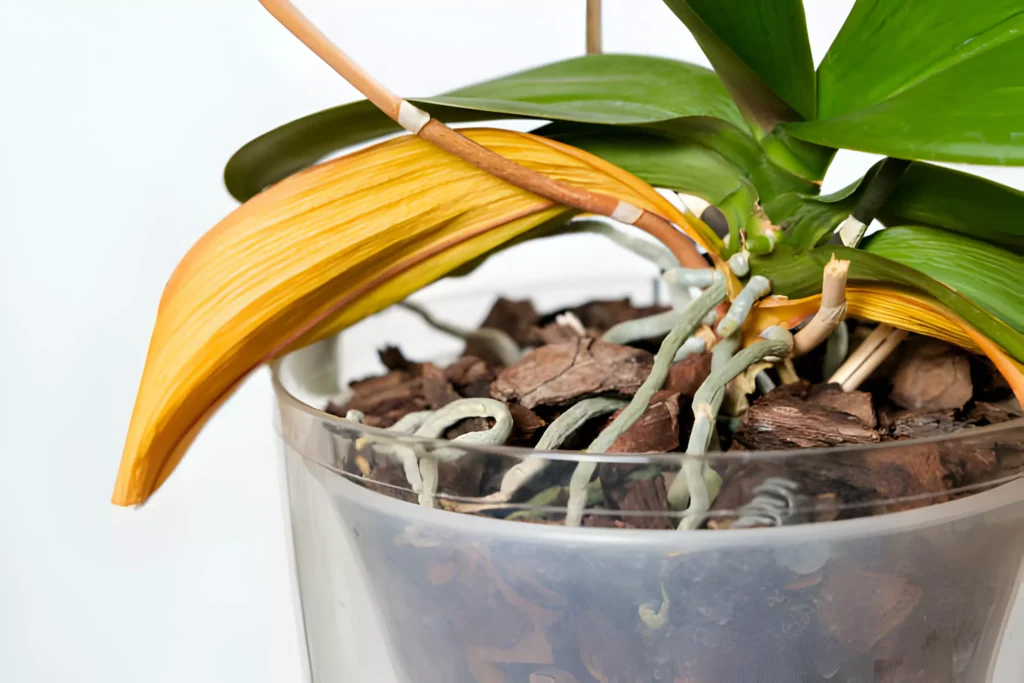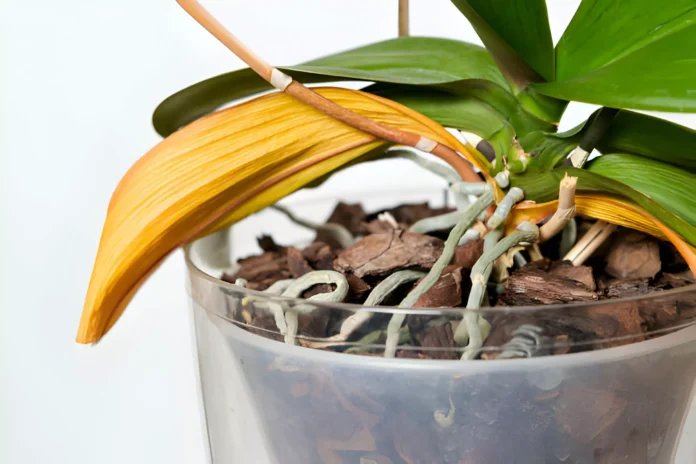Unlocking the Secrets to Keep Your Orchid’s Foliage Vibrant
Orchids, with their exotic beauty, are a favorite among plant enthusiasts. However, when those lush green leaves start to turn brown, it can be a cause for concern. In this comprehensive guide, we’ll delve into the reasons behind orchid leaves turning brown and equip you with effective strategies to revive the health and vitality of your prized orchids.

Unraveling the Mysteries of Brown Orchid Leaves
Orchids, known for their delicate nature, may exhibit browning leaves due to various factors. Identifying the specific reasons is crucial for implementing targeted solutions.
1. Overwatering Woes:
One of the most common reasons for orchid leaves turning brown is overwatering. Orchids are epiphytes, meaning they thrive in environments where their roots can breathe. Excessive moisture around the roots can lead to root rot, causing the leaves to turn brown. Ensure proper drainage and allow the growing medium to partially dry between watering sessions.
2. Inadequate Drainage:
Poor drainage can exacerbate the issues caused by overwatering. Orchids planted in a medium that retains too much water can experience root suffocation, leading to browning leaves. Choose a well-draining orchid mix and consider adding materials like perlite or bark to enhance drainage.
3. Insufficient Humidity:
Orchids, originating from tropical regions, thrive in high humidity. Low humidity levels can result in the browning of leaf tips and edges. Increase humidity by placing a humidifier near your orchids, placing water-filled trays nearby, or grouping orchids together to create a microclimate.
4. Sunburn and Light Stress:
While orchids require light for photosynthesis, excessive direct sunlight can lead to sunburn, manifesting as brown spots on the leaves. Provide filtered or diffused light for your orchids, shielding them from intense afternoon sun. Gradually acclimate orchids to changes in light conditions to minimize stress.
5. Nutrient Imbalance:
A lack of essential nutrients or an imbalance in the fertilizer regimen can contribute to browning leaves. Orchids require a specific blend of nutrients, including nitrogen, phosphorus, and potassium. Use a balanced orchid fertilizer and follow a regular feeding schedule, adjusting based on the orchid’s growth phase.
6. Pests and Diseases:
Insects such as spider mites, scale, or fungal infections can compromise the health of orchids, leading to browning leaves. Regularly inspect your orchids for pests and treat promptly with insecticidal soap or neem oil. Maintain good orchid hygiene to prevent the spread of diseases.
Reviving Your Orchid’s Lush Greenery: Practical Solutions
1.Adjust Watering Practices:
Establish a consistent watering routine, allowing the orchid’s growing medium to dry out slightly between waterings. Ensure proper drainage to prevent waterlogged conditions that contribute to root rot.
2. Evaluate the Growing Medium:
Repot orchids if the growing medium retains too much moisture. Choose a well-aerated orchid mix that promotes good drainage and aeration for the roots.
3. *Enhance Humidity Levels:
Implement humidity-boosting strategies, such as using a humidifier, placing water-filled trays with pebbles around the orchids, or grouping multiple orchids together.
4. Optimize Light Conditions:
Provide filtered or indirect light to prevent sunburn. Adjust the orchid’s placement to ensure it receives adequate but not excessive light. Monitor changes in light conditions during different seasons.
5. Maintain Nutrient Balance:
Use a balanced orchid fertilizer and follow recommended feeding schedules. Adjust fertilizer concentrations based on the orchid’s growth phase and health status.
6. Combat Pests and Diseases:
Regularly inspect your orchids for pests and signs of diseases. Treat infestations promptly using appropriate remedies, such as insecticidal soap or neem oil. Isolate infected orchids to prevent the spread of diseases.
Conclusion: Nurturing Healthy Orchids
In conclusion, the browning of orchid leaves is a reversible challenge with the right knowledge and actions. By addressing factors like watering, drainage, humidity, light, and nutrition, you can create an optimal environment for your orchids to thrive.
Stay vigilant, adapt your care routine as needed, and witness the resurgence of vibrant, green foliage in your beloved orchids. Embrace the art of orchid care, and let your stunning plants flourish once again.
Also read: What Planting Zone Is Indiana: A Guide to Gardening Success


